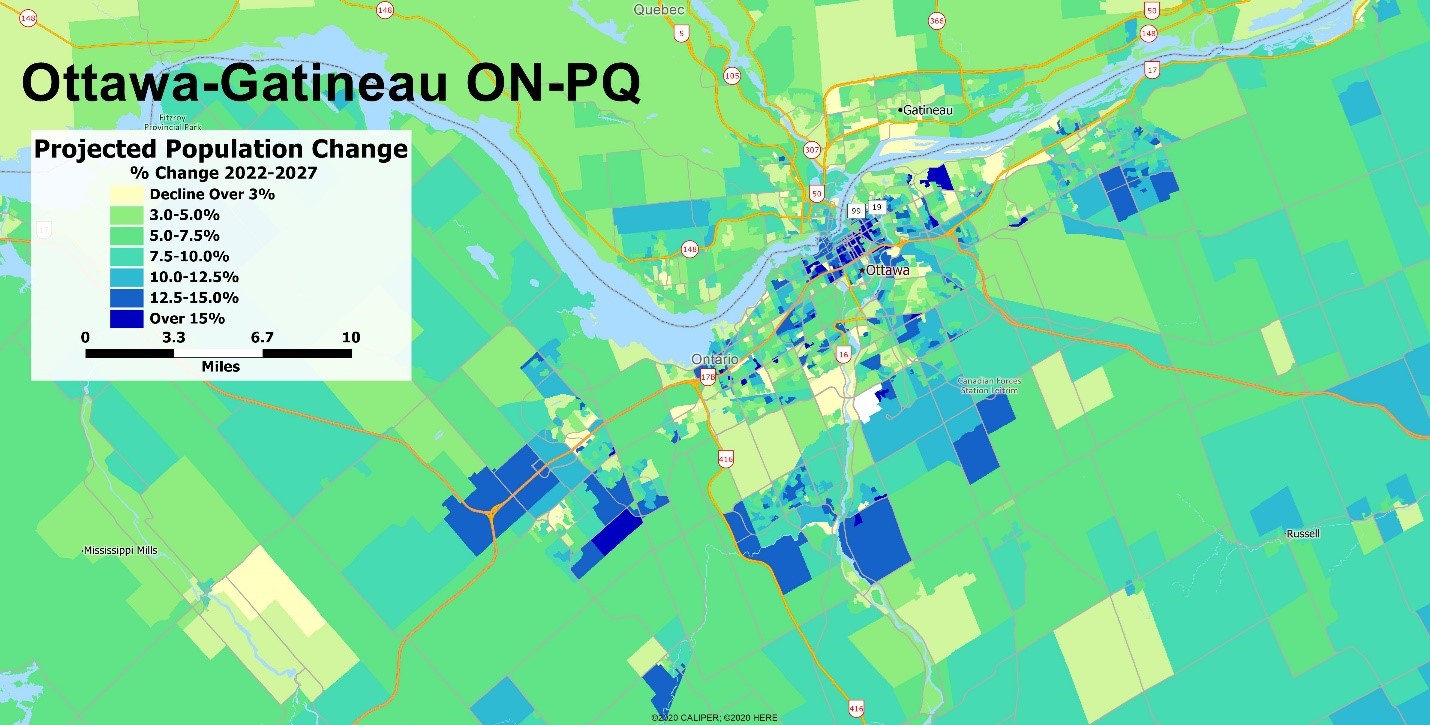Last year, we released basic demographics for Canada. In line with our U.S. demographics, we have expanded the Canadian Demographics database to include estimates and projections. In addition to greatly expanding the list of current estimates, we are adding a set of five-year projections for critical variables. This list includes Population by Age, Population by Sex, Households, Household Income distributions, Median and Average Household Income and Personal Income distributions and Median/Average.
Of course, projections can be important for long-range planning of retail and health care networks to be ahead of the curve as is the case for real estate development, in general. While you want to make sure that you are making a site selection that the current population can support, knowing if the demographics of the area will be experiencing a major shift in the near future is equally important to ensure that the tenant can fulfill the length of the lease.
To visualize this data, we mapped the two largest cities in Ontario, Ottawa and Toronto. Both are expected to grow significantly, but the patterns are different and interesting. When looking at Ottawa, significant development is happening in the outer suburbs of Kanata, Orleans, and in the southern section of the city of Ottawa itself, bringing in new residents to those areas. There is also significant redevelopment in many of the older parts of the city – especially along the Highway 417 corridor. Those areas can be seen on the map below.

In Toronto, suburban development continues in much of the metropolitan area, but with significant redevelopment along the lakeshore and most importantly, along the Spadina subway line. Areas like Vaughan and Brampton see significant growth, and very few areas see a decline, as you can see on the map below.

Canada demographics, including these new projections, are now available.


Recent Comments